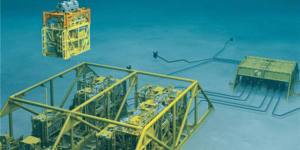.png)
The Scope of Work
Jee was approached by a major operator to carry out lifetime extension assessments (LTE) for nine of their pipelines situated in the North Sea. The pipelines were approaching the end of their design lives and our client wished to continue production.
The Work Plan
Jee completed the work in two stages, starting with the main 30” oil export pipeline, and then utilising the lessons learnt and feedback from the client, continued to assess the remaining eight infield pipelines. The pipelines that were assessed comprised:
- 1 x oil export pipelines (30”)
- 2 x oil import flowlines (6”)
- 2 x condensate import flowlines (12” and 6”)
- 2 x gas life flowlines (6” and 2.5”)
- 2 x service flowlines (4”)
The first stage was to establish the current integrity of the pipelines. The majority of the pipelines were well maintained, with some having been conservatively engineered at the design stage. The production pipelines were constructed of duplex stainless steel with excellent CP on the carbon steel spools. The gas lift and service pipelines were carbon steel, containing dry gas and treated water. No significant integrity concerns were found on the production or gas life pipelines, but the treated water in one of the disused service pipelines posed a potential threat.
Stage two was to verify the pipeline’s design against the latest codes and determine the remnant life. The wall thickness calculations showed an adequate design and the stability study confirmed that the pipelines were only unstable if they were exposed.
The 30” export pipeline had been pigged and existing ILI data could be used to assess the internal corrosion. The other pipelines were not piggable so corrosion was gauged on available corrosion coupons and UT inspection results on spools.
The outcome of the assessment depended heavily on the quantity and quality of the data. In this case, there were some gaps in historical operational data which meant that Jee had to assess the operational fatigue using a conservative approach with various assumptions, for example, a daily pressure fluctuation.


.png)
.png)

.png)